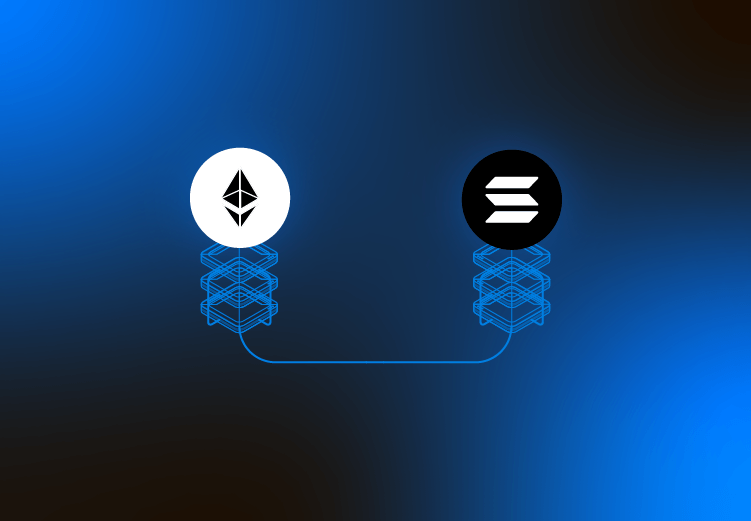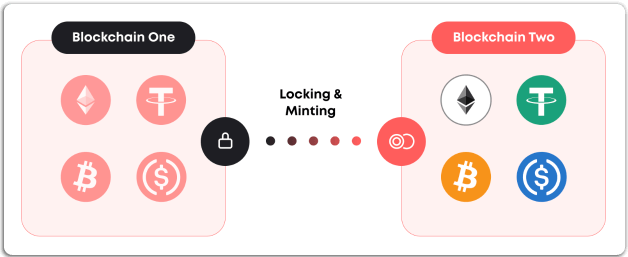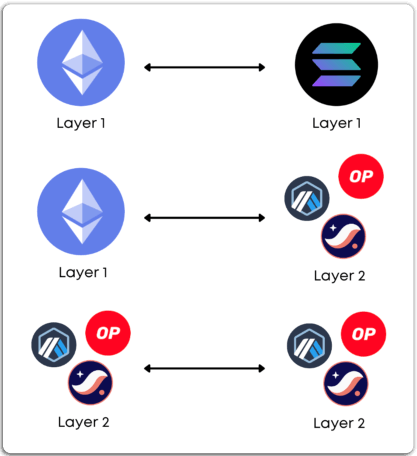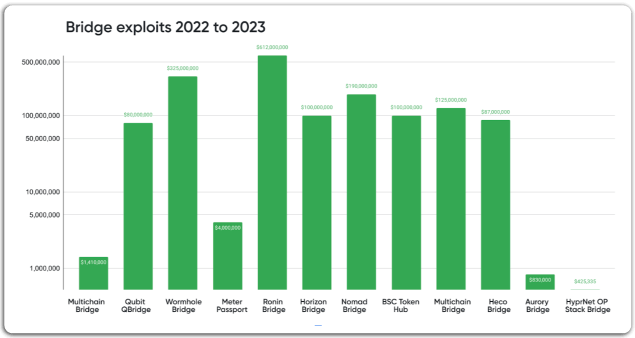What Are Blockchain Bridges?
 5 minutes
5 minutes

 5 minutes
5 minutes

A blockchain bridge connects two separate blockchain networks (e.g. Ethereum and Solana), allowing them to communicate and transfer data or assets. In a blockchain ecosystem, each blockchain operates independently with its unique tokens, consensus mechanisms, and features.
Bridges enable these blockchains to become interoperable, meaning tokens, smart contracts, and data can move between them seamlessly. For example, a bridge can allow Ethereum users to move their assets to Solana, enabling them to benefit from Solana's faster and cheaper transactions.
Worth noting, that bridges do not just have to be between layer-one blockchains (L1s). They can also exist between blockchain layers. For example, bridging solutions exist for moving cryptocurrencies between Ethereum mainnet and its various layer-twos (L2s) such as Arbitrum and Optimism.
 Bridges can connect all types of blockchains
Bridges can connect all types of blockchains
The primary reason for blockchain bridges is interoperability. Blockchains operate in silos, with no built-in method for assets or information to move between them. This isolation limits the functionality and usability of many blockchain applications, particularly in areas like DeFi, where liquidity and cross-chain transactions are essential.
Bridges allow tokens to flow freely between blockchains, ensuring they can be used across different DeFi platforms, increasing the overall liquidity.
With bridges, users aren’t locked into a single ecosystem. They can take advantage of the unique benefits offered by different blockchains, like lower fees or faster transaction times, without losing ownership of their preferred tokens.
The vast majority of blockchain bridges work by locking assets on the original blockchain and minting equivalent tokens on the destination blockchain. There are two primary types of blockchain bridges:
These rely on a central entity or authority to manage the transfer of assets between blockchains. The centralised nature of these bridges requires users to trust the entity to handle the assets securely.
These use smart contracts and algorithms to automate the transfer process without requiring an intermediary. Trustless bridges operate fully on-chain, reducing the need for users to place trust in a central entity. However, they can still be vulnerable to bugs in the smart contract code.
Here’s a simplified example of how a blockchain bridge might work:
 Bridging between chains locks the tokens on Chain 1 and mints new ones on Chain 2
Bridging between chains locks the tokens on Chain 1 and mints new ones on Chain 2
While blockchain bridges provide legitimate utility, they are not without their security risks. Bridges have been involved in some of the largest crypto exploits in the past decade, with malicious actors taking advantage of vulnerabilities in various bridging smart contracts.
Trustless bridges rely on complex smart contracts to handle transactions between chains. If any critical bugs are discovered in these smart contracts, they can be exploited and result in user funds being drained.
Trusted bridges, managed by central entities, are prone to insider threats and mismanagement, which could result in the loss of funds if the central authority is compromised.
Despite these risks, developers are continuously working on improving bridge security through better auditing processes, code improvements, and the development of more robust decentralised mechanisms.
 Most significant blockchain bridge exploits (amount in USD)
Most significant blockchain bridge exploits (amount in USD)
Blockchain bridges are a key innovation that enables the transfer of assets and data across different blockchains, enhancing liquidity and interoperability. However, with great utility comes significant security risks, making it essential for developers and users alike to proceed with caution when engaging with these systems. As technology evolves, the security and efficiency of blockchain bridges will continue to improve, solidifying their place in the blockchain ecosystem.
